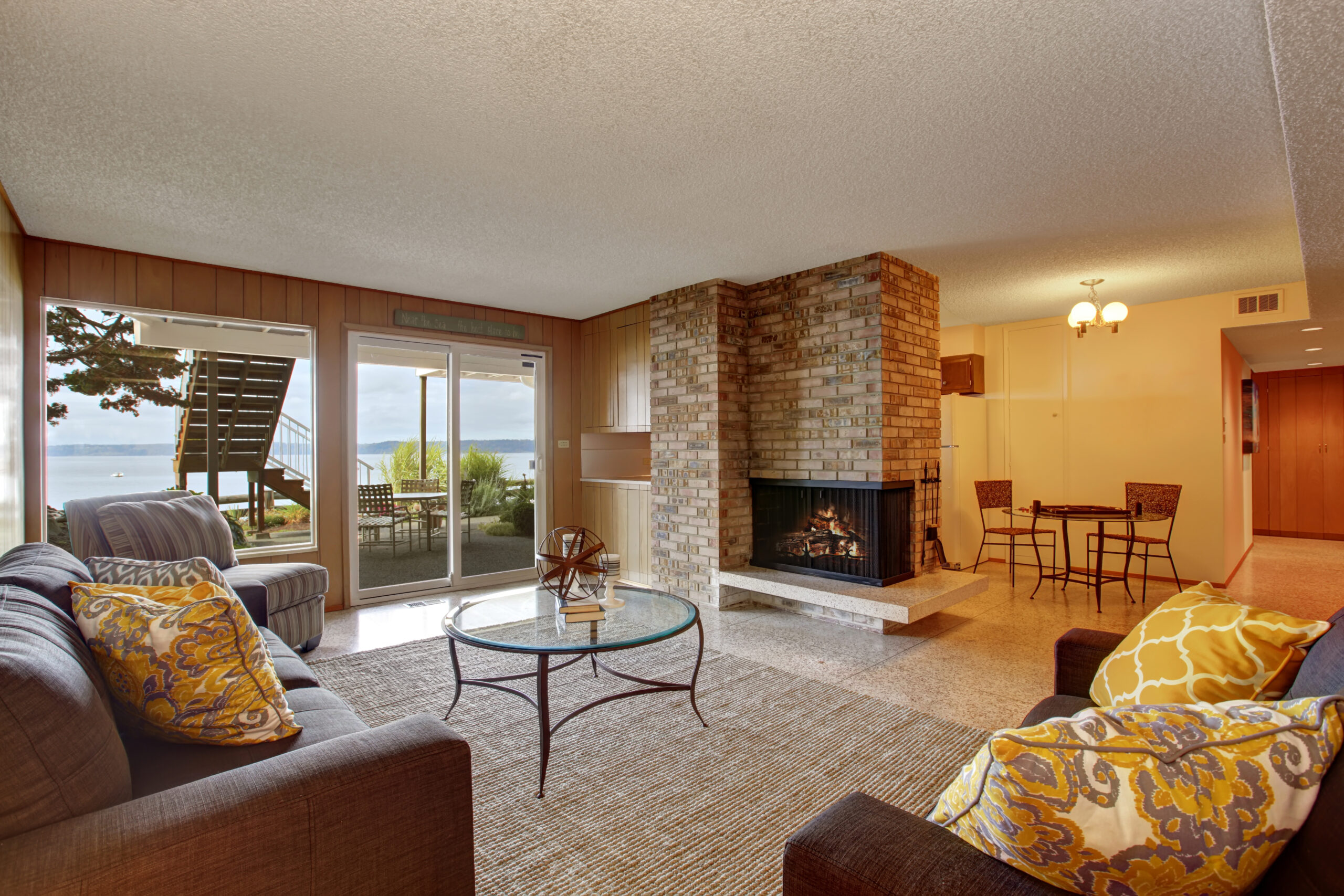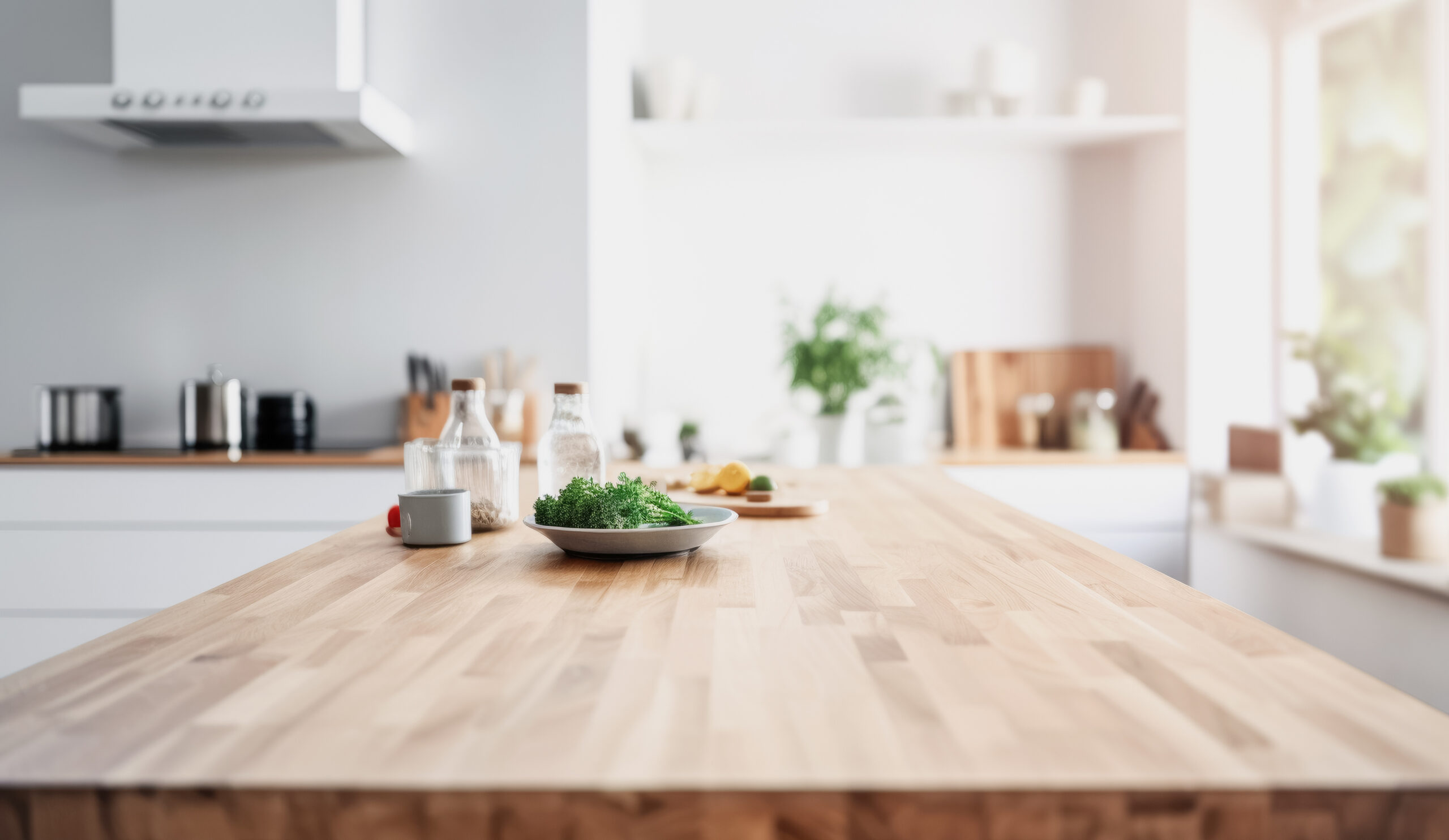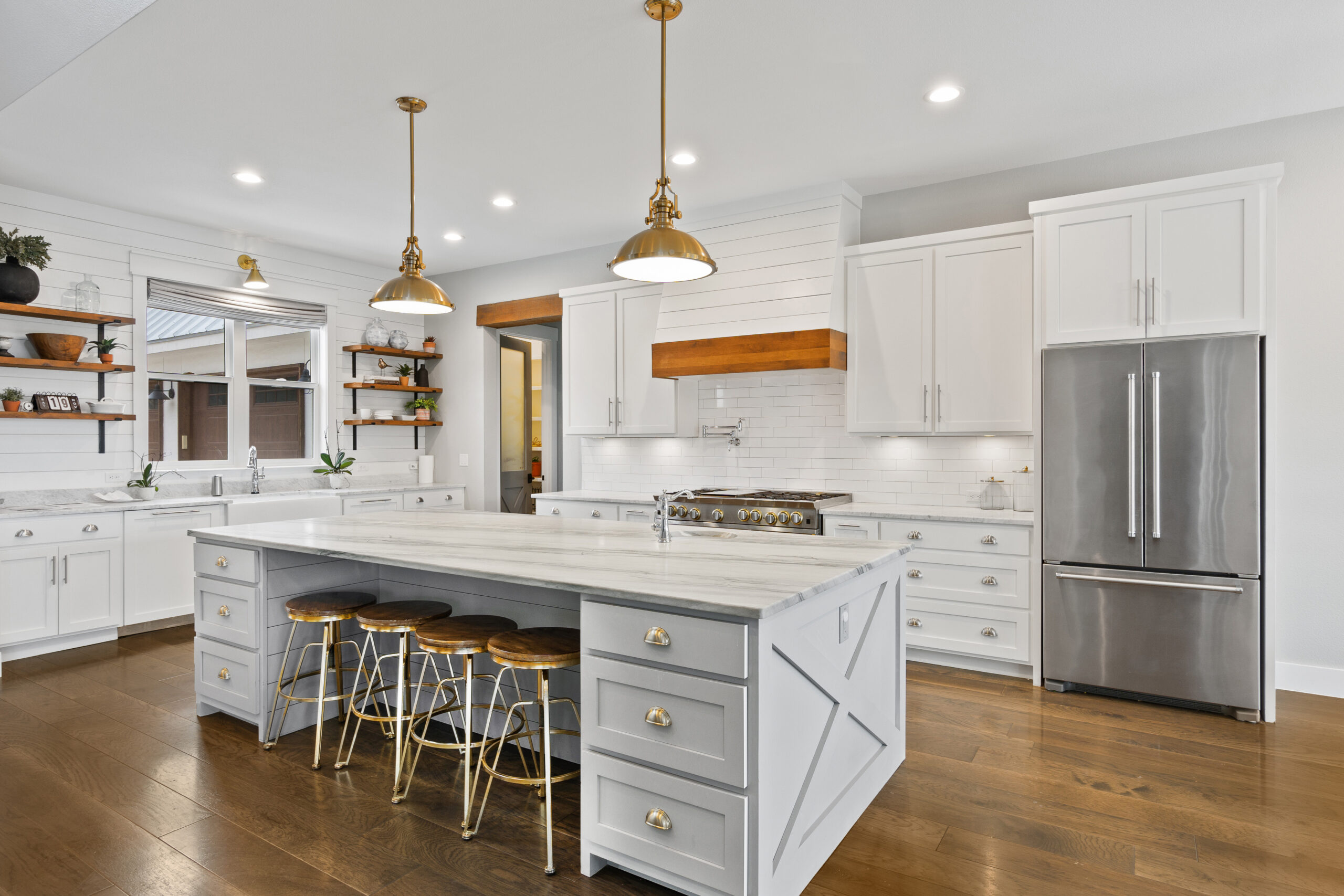
What is a panel ready refrigerator? It is a question many homeowners ask when they see those stunning kitchens where the fridge seems to disappear behind cabinetry. In this blog from Redleaf Renovations, we explain how panel-ready and fully integrated refrigerators work, what they cost, what installation involves, and whether they are the right choice for your kitchen. If you want a seamless, built-in look with high-quality craftsmanship and Amish-built cabinetry, keep reading for expert tips you can use right away.
Quick Answer: What is a panel ready refrigerator?
A panel ready refrigerator is a fridge designed to accept custom cabinet panels on its doors so it looks like part of your cabinetry. Unlike a standard stainless unit, the doors ship unfinished. Your builder or cabinetmaker attaches matching cabinet panels and handles so the appliance blends into the kitchen. The trim and dimensions are built for a near-flush or fully flush appearance, depending on the model. If you want a simple definition to remember: a panel-ready fridge is a refrigerator that hides behind custom cabinet doors. That is why people call them disappearing fridges.
How panel-ready fridges actually work
The role of custom panels
Panel-ready refrigerators come with mounting points on the door and sometimes the drawer to accept a custom panel. The panel is a finished cabinet door or slab made to match your kitchen. It must be the right thickness, width, height, and weight, and it must include the correct edge profile to align with adjacent doors. At Redleaf Renovations, we often pair panel-ready appliances with Amish-built cabinetry so the grain, tone, and hardware details match perfectly.
Built-in versus fully integrated
Manufacturers use two terms that are easy to confuse. Built-in panel-ready refrigerators are usually counter-depth with a visible door edge or frame. Fully integrated units are engineered to sit flush with surrounding cabinets with minimal or zero visible trim. Integrated models achieve the most seamless look because the door and the cabinet face line up, creating a continuous plane. When clients ask what is a panel ready refrigerator really capable of, we explain that the many models range from near-flush built-ins to completely flush integrated columns.
Door swing, hinges, and reveals
Door swing affects how your panels line up. Some fridges use standard hinges. Many integrated models use articulated hinges that allow the door to swing wide without hitting adjacent cabinets. Your cabinetmaker must plan reveals, the small gaps between panels, to prevent chipping and rubbing. Even a 1 or 2 millimeter difference can change how the doors look. Redleaf Renovations checks hinge clearances, overlay dimensions, and reveals during design so the finished fridge opens smoothly and stays aligned over time.
Ventilation and toe-kicks
Refrigerators need airflow. Some draw air from the top, some from the bottom, and some from the front grille. Your cabinet plan must include the required intake and exhaust space. Ignoring these cutouts is a common mistake that causes poor cooling and more noise. Panel-ready units often specify a toe-kick height and depth, and many require vent grilles at the top or bottom. Our team coordinates all of this with your cabinet shop to preserve performance and the integrated look.
Benefits and tradeoffs
- Seamless design: The biggest benefit is the unified aesthetic. The fridge disappears and the cabinetry becomes the star.
- Custom fit: Sizes include columns, bottom freezers, and French doors, which allows flexible layouts.
- Resale appeal: High-end buyers value a tailored kitchen with integrated appliances.
- Noise control: Many premium panel-ready models operate quietly, which helps open-concept spaces.
- Durability of finishes: Cabinet panels can be refinished years later if styles change.
- Higher cost: The appliance, panels, hardware, and installation are more expensive than a standard fridge.
- Longer lead times: Panels and specialty appliances can add weeks to a schedule.
- Precise installation: Tighter tolerances mean installation must be exact. Leveling and alignment take time.
- Future swaps: Replacing the unit years later may require a model with similar dimensions or new panels.
- Weight and hinge stress: Heavy panels require correct hinge specs and careful handling.
Costs you should plan for
Prices vary by brand, size, and cabinet finish, but these ranges help set expectations:
- Appliance: 3,000 to 10,000 for many 30 to 36 inch panel-ready models. Luxury integrated columns can run 8,000 to 20,000 per column.
- Custom panels: 800 to 2,500 for a pair of doors or drawer fronts. Exotic veneers or complex profiles can be higher.
- Hardware and pulls: 100 to 500 depending on style and length. Oversized pulls cost more.
- Installation and alignment: 600 to 2,000 based on complexity and site conditions.
- Cabinet modifications: 500 to 3,500 if the opening, toe-kick, or venting requires changes.
- Electrical and plumbing: 150 to 600 for outlet or water line adjustments.
These are broad estimates. Redleaf Renovations provides itemized budgets tied to real specifications so there are no surprises. When we design kitchens with Amish-built cabinetry, we also include finishing details such as grain matching and panel edge profiles in the cabinet quote, which helps keep the overall budget clear.
Installation requirements and timeline
- Measure and select: Confirm appliance model, style, and hinge side. Gather spec sheets for the appliance and the panel kit. This drives cut sheets for the cabinet shop.
- Order early: Place appliance and panel orders as soon as layouts are signed off. Many integrated models have longer lead times.
- Rough-in utilities: Install the dedicated outlet, circuit, water line, and shutoff location per manufacturer guidelines. Verify GFCI and code requirements in your area.
- Cabinet production: Your cabinetmaker builds the surrounding box, filler panels, and the custom doors. For Amish-built cabinetry, we coordinate stain and finish samples to ensure a true match.
- Site prep: Level the floor, check the alcove dimensions, install anti-tip brackets if required, and confirm ventilation cutouts.
- Appliance delivery: Inspect packaging for damage, store panels flat, and acclimate wood panels before install to reduce warping.
- Set in place: The crew places the unit, connects water and power, levels the cabinet cavity, and checks door swing.
- Panel mounting: Panels are mounted to the door with manufacturer hardware, aligned to adjacent faces, and adjusted for even reveals.
- Final tuning: Adjust hinges, check gasket seal, test water and ice, and verify airflow at grilles. Document model and serial numbers for warranty.
Typical timeline is 6 to 12 weeks from selection to final install, depending on appliance availability and cabinet production. Redleaf Renovations manages this schedule for our clients so the delivery, cabinet install, and panel mounting happen in the right order.
Measuring and spec checklist
- Opening width, height, and depth with finished wall and panel thicknesses included.
- Panel thickness and weight within manufacturer limits.
- Hinge type, hinge overlay, and door swing clearance against walls and islands.
- Ventilation location and grille size, plus toe-kick height and set-back.
- Electrical outlet type and location. Water line location with shutoff valve and access panel.
- Floor level across the front and back feet to prevent door self-swinging.
- Reveal targets around panels to match the rest of the kitchen.
- Handle style, center-to-center dimensions, and pull length alignment with adjacent cabinets.
- Drain pan and filter access positions so maintenance does not require panel removal.
- Anti-tip brackets and securing points per the manual.
- Proximity to ovens or heat sources and any required thermal barriers.
- Transport path into the home and doorway clearances, including removal of doors if needed.
Design tips from Redleaf Renovations
Panel-ready fridges look best when the cabinetry is planned around them from the start. Our design team uses these principles on kitchen remodels across the Wauwatosa area and beyond:
- Line up reveals: Match the gaps and rail heights of the panel with nearby doors for a true built-in feel.
- Plan grain flow: For slab doors, continue the wood grain across the fridge panels to adjacent cabinets. Amish-built cabinetry makes this detail achievable and stunning.
- Hide the handles or celebrate them: Integrated pulls keep the look quiet. Oversized bar pulls add a modern statement. Either way, keep the handle language consistent.
- Balance the wall: Tall pantry cabinets, an appliance garage, or a wall oven stack can visually balance a large panel-ready refrigerator.
- Think of cleaning: Select finishes that are easy to wipe down. Matte paints and durable conversion varnishes stand up well to daily use.
- Use lighting: Under-cabinet or cove lighting can flatter the panel finish and highlight the flush installation.
Common mistakes to avoid
- Ordering the wrong panel thickness or the wrong hinge overlay for the model.
- Forgetting ventilation cutouts, which can cause the unit to run hot or loud.
- Ignoring floor slope, which leads to misaligned reveals and doors that will not stay closed.
- Mounting handles before final leveling, which results in crooked pulls.
- Assuming any fridge is panel-ready. If it is not designed for panels, you cannot add them.
- Skipping acclimation for wood panels. Wood can move if the home is not at normal temperature and humidity.
- Blocking filter or valve access behind finished panels.
- Underestimating weight. Heavy panels need proper hinges and careful handling to protect the door liner.
Alternatives if panel-ready is not the right fit
- Counter-depth stainless: Shallower depth reduces the visual bulk while keeping costs lower than integrated units.
- Designer-color appliances: A colored finish can provide a focal point without hiding the appliance.
- Built-in surround for a standard fridge: Custom panels and side gables frame a freestanding appliance for a tailored look.
- Under-counter refrigeration: Drawers or beverage centers offer capacity without a large tall unit.
- Glass-door beverage columns: Stylish in bars or pantry areas and often less panel-sensitive.
FAQ: Straight answers to common questions
Can any fridge be panel ready?
No. Only models designed for panels can accept them. They include mounting points and hinges rated for the extra weight. If you are unsure, provide your model number to your contractor.
Can I retrofit panels onto my current fridge?
Usually not. Adhesive skins are not the same as true panels and may interfere with doors, seals, or vents. It is better to select a panel-ready model or redesign the cabinet surround.
Do panels affect performance?
Not if installed correctly. Ventilation clearances must follow the manufacturer’s guide. Redleaf Renovations verifies airflow paths during design and install so the fridge cools efficiently.
Are panels heavy and will that stress the door?
Panels add weight, but panel-ready hinges are engineered to support it. Your cabinetmaker should follow the specified panel weight and thickness limits.
What finishes can I use for panels?
Painted, stained wood, or laminate are common. For durability, choose high-quality finishes. Our Amish-built cabinetry partners offer robust finishes that handle daily wear.
How do I clean panel-ready doors?
Use a soft cloth and a cleaner suited to your finish. Avoid harsh abrasives. For painted panels, a mild soap solution is best. For stained wood, use a non-wax polish recommended by the cabinetmaker.
Do panel-ready appliances help resale value?
Yes in many markets, especially when paired with well-crafted cabinetry. Buyers appreciate the upscale, cohesive look.
Can dishwashers and other appliances be panel ready too?
Yes. Dishwashers, warming drawers, and under-counter units often accept matching panels. When a full suite is integrated, the kitchen reads as furniture rather than a collection of machines.
What to expect when you work with Redleaf Renovations
Since 2011, Redleaf Renovations has delivered personalized remodeling with a focus on craftsmanship, communication, and details that last. Our team plans, builds, and installs kitchens that reflect your style while meeting the technical demands of modern appliances. We specialize in Amish-built cabinetry that pairs beautifully with panel-ready refrigerators. We coordinate appliance specifications with cabinet production so door profiles, reveals, and grain match are spot on. We level floors, align panels, and fine-tune hinges to protect your investment and create a kitchen you will love for years.
Beyond kitchens, Redleaf Renovations offers complete home renovations, basement renovations that turn unused areas into comfortable living spaces, and thoughtful additions that expand your home as your needs evolve. If you are in or around Wauwatosa, Wisconsin, or planning a project inspired by our work there, we are ready to help you choose the right appliances and integrate them seamlessly into your design.
Is a panel-ready refrigerator right for you?
Choose panel-ready if your top priority is a cohesive, furniture-like kitchen. Make sure your layout supports door swing, ventilation, and proper integration with your cabinetry. Budget for the appliance, the custom panels, and skilled installation. If you are on the fence, consider a counter-depth stainless model framed by cabinetry as a middle path. When clients ask what is a panel ready refrigerator going to do for my kitchen, our answer is simple. It transforms the look by letting beautiful cabinetry take center stage.
Next steps
- Save inspiration photos that show the panel style, handle type, and overall look you want.
- Pick a few appliance models that fit your size and budget. Gather their spec sheets.
- Book a consultation with Redleaf Renovations. We will review your space, confirm clearances, and align your cabinet design with your appliance choice.
- Lock in final selections early to avoid lead-time delays, especially for integrated columns and custom finishes.
- Trust a skilled install team to set, level, and align panels with care. This is where the disappearing magic truly happens.
If you have been wondering what is a panel ready refrigerator and whether it is worth it, the short answer is yes, if you value a seamless look and are ready to invest in quality. Redleaf Renovations can help you plan the details, avoid costly mistakes, and achieve that clean, custom finish. Contact Redleaf Renovations to start designing a kitchen that blends beauty, function, and craftsmanship from the inside out.




